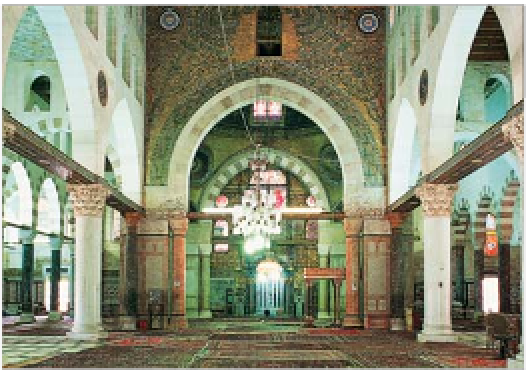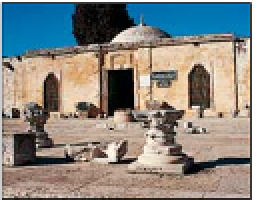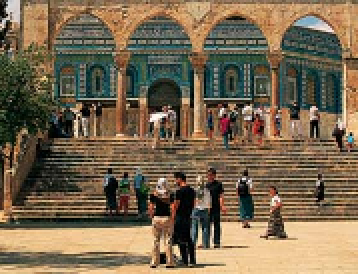Travel Reference
In-Depth Information
Exploring the Haram esh-Sharif
Although the undoubted main attraction is
the Dome of the Rock, the Haram esh-
Sharif has a great many other features that
are worthy of attention. The esplanade acts
as a virtual museum of Islamic architecture,
beginning with the Dome, which dates back
to the Omayyad era and is the earlie
s
t
structure, and running through the Ayyubid
Antiquity-strewn area in front of
the Museum of Islamic Art
Stone
window,
El-Aqsa
A
(Grammar
College), Mameluke (numerous
madrasas
) and Ottoman periods. Visitors
s
should be aware that certain parts of the Haram esh-
Sharif are out of bounds, notably the area south of the
Gate of the Tribes and east of El-Aqsa.
MUSEUM OF ISLAMIC ART
Housed in the Crusader-era
refectory of the Knights
Templar, this sparsely-filled
museum contains objects
donated to the Haram esh-
Sharif over the centuries, as
well as architectural remnants
from many of the Haram's
buildings. Worthy of mention
are the precious large Qurans,
with pages adorned by fine
Islamic calligraphy; part of a
carved cypress-wood ceiling
from El-Aqsa, dating from the
7th century and removed in
1948; and fine 15th-century
copper doors from the Dome
of the Rock. Admission to the
museum is included in the
fee for the Dome of the Rock
and El-Aqsa Mosque.
Visitors with an interest in
Islamic art should also visit
the LA Mayer Museum in the
new city
(see p130)
The much reconstructed interior of the El-Aqsa Mosque
columns, donated by Benito
Mussolini, and an elaborately
painted ceiling paid for by
King Farouk of Egypt. Older
elements include the mihrab,
decorated in 1187 under the
patronage of Saladin, and the
mosaics above the central
aisle arch and around the
drum of the dome, dating
from 1035. Until 1969, the
mosque had a fine carved
pulpit
(minbar)
, also dating
from the time of Saladin, but
this was lost in a fire started
by a deranged visitor.
EL-AQSA MOSQUE
.
Construction of El-Aqsa
was begun less than 20 years
after the completion
of the Dome of the Rock.
However, unlike the Dome,
whose structure and interior
have remained intact over the
centuries, El-Aqsa has under-
gone great changes. In the
first 60 years of its existence
the mosque was twice razed
to the ground by earthquakes.
Its present form dates from the
early 11th century. When the
Crusaders captured Jerusalem
in 1099, El-Aqsa became the
headquarters of the Templars
(see p49)
; their legacy remains
in the three central bays of
the main façade. As it appears
today, the façade has seven
bays; in the mid-14th century
the Mamelukes added an
extra two on either side of
the original Crusader porch.
The interior is dominated
by mid-20th century addi-
tions, notably ranks of marble
THE QANATIRS
Eight short flights of steps
lead up to the platform on
which the Dome of the Rock
sits. All these stairways are of
different sizes and lengths,
and they all date from
different periods. The flight
opposite the Sabil of Qaitbey,
leading up to the main
entrance of the
Dome, is unique
in that it is carved
out of the stone
of the platform.
Each flight is
crowned by a
slender arcade
known as a
qanatir
. An
alternative name
for the arches is
mawazin
, or
scales, because
according to a
A
qanatir
, topping a flight of steps up to the Dome
r
For hotels and restaurants in this area see p256 and p272




















